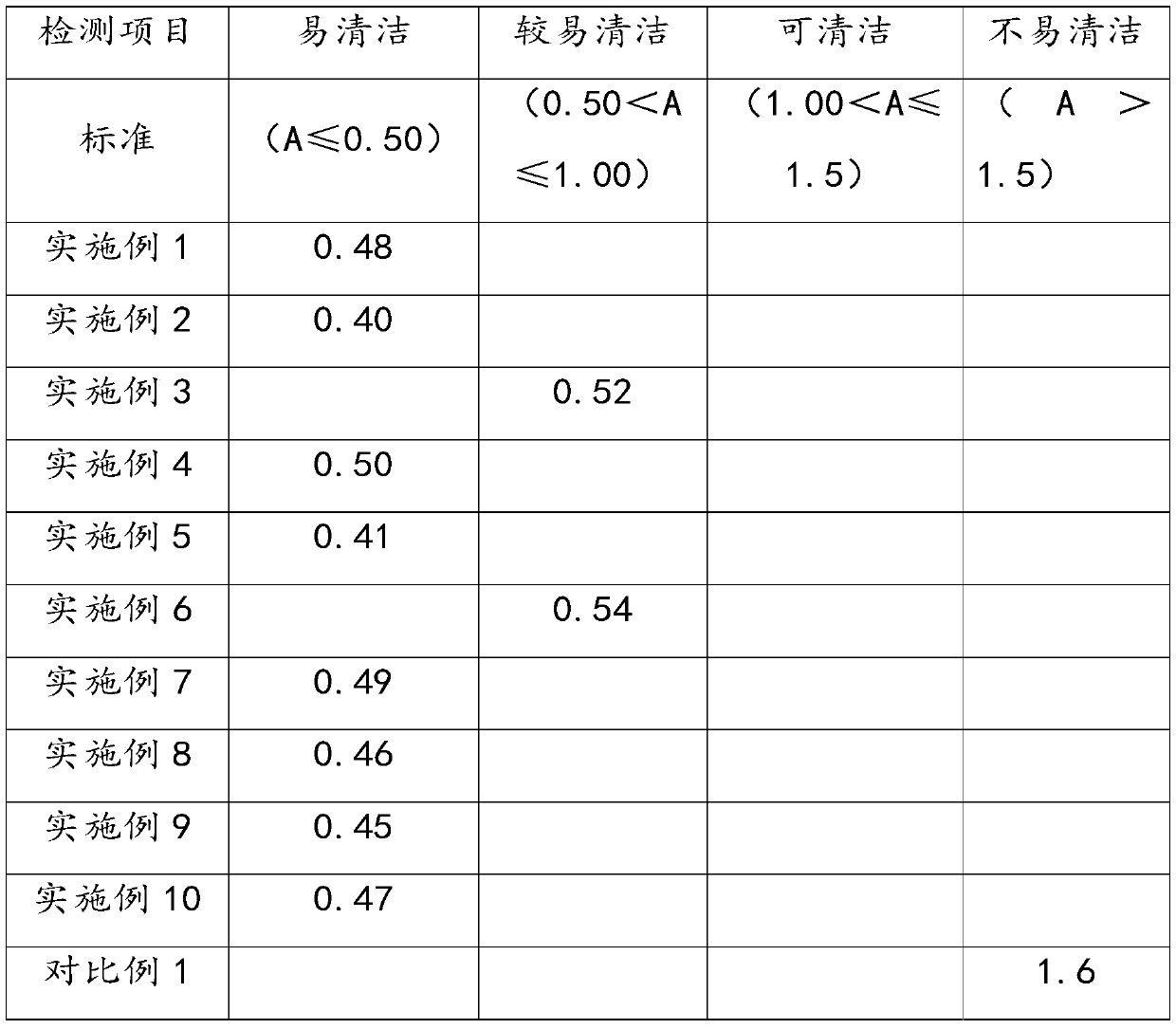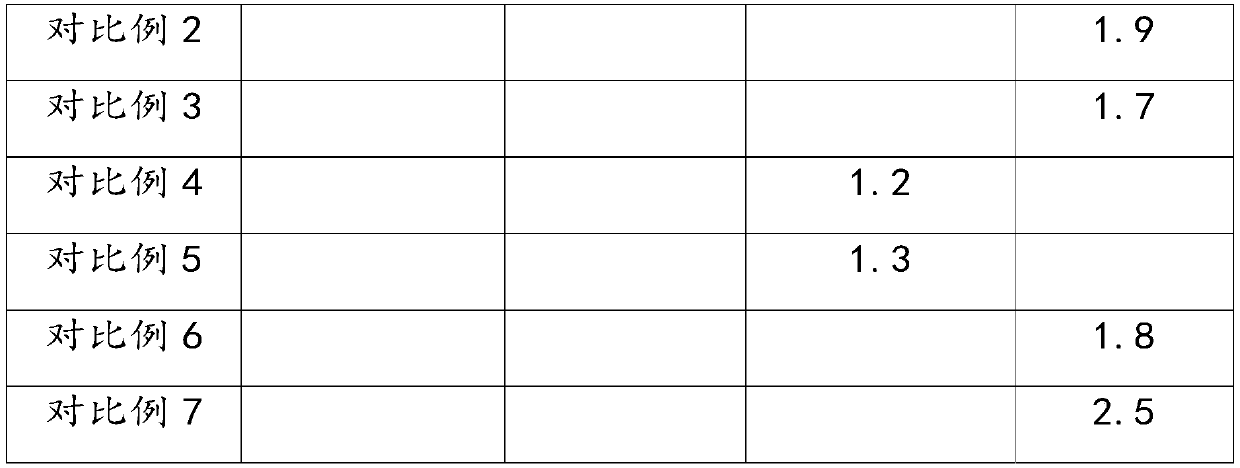Easy clean ceramic tile
A ceramic tile and easy-to-clean technology, applied in the field of ceramic decoration, can solve the problems of difficult surface cleaning, poor anti-fouling effect, and product blackening, and achieve excellent anti-fouling and easy-cleaning properties, easy to clean, and strong three-dimensional layering effect
- Summary
- Abstract
- Description
- Claims
- Application Information
AI Technical Summary
Problems solved by technology
Method used
Image
Examples
Embodiment 1-3
[0082] An easy-clean protection brick, which sequentially includes a body layer, a surface glaze layer, a printing layer and an easy-clean protection dry particle layer from bottom to top, and the easy-clean protection dry particle layer is formed by applying the easy-clean protection glaze; the easy-clean protection glaze is formed according to the The ratios of the parts by mass of the raw materials shown in Table 1 were prepared.
[0083] Table 1 embodiment 1-3 easy clean protective glaze raw material composition
[0084] raw material Example 1 Example 2 Example 3 Easy Clean Protective Glaze 90 servings 100 copies 110 servings ink 230 servings 250 servings 270 copies transparent glaze 20 servings 30 servings 40 servings
[0085] Among them, Yijie protective particles are mainly composed of the following components by mass: SiO 2 66 parts, Al 2 O 3 21 servings, Fe 2 O 3 0.15 part, TiO 2 0.06 part,, Na 2 O 6 copie...
Embodiment 4-6
[0090] An easy-to-clean protective brick, which sequentially includes a body layer, a surface glaze layer, a printing layer and an easy-to-clean protective dry grain layer from bottom to top, wherein the easy-to-clean protective dry grain layer is formed by applying the easy-to-clean protective glaze; It is made from the following raw materials in parts by mass: 100 parts of Yijie protective particles, 250 parts of printing oil and 30 parts of transparent glaze. Among them, the easy-clean protection particles are mainly composed of the components shown in Table 2 in parts by mass.
[0091] Table 2 Example 4-6 Composition of Easy Clean Protective Particles
[0092] component Example 4 Example 5 Example 6 SiO 2
[0093] Among them, the particle gradation of the easy-clean protective particles, the composition of the ink and the transparent glaze are all the same as those in Example 1.
Embodiment 7
[0095] An easy-to-clean protective tile, which is different from Example 1 in that the components of printing oil and transparent glaze are the same as in Example 1.
[0096] In this embodiment, the ink is mainly composed of the following components in parts by mass: 2 parts of sodium carboxymethyl cellulose, 35 parts of ethylene glycol, 5 parts of bentonite and 80 parts of water.
[0097] The transparent glaze is mainly composed of the following components by mass: 16 parts of albite, 24 parts of potassium feldspar, 10 parts of kaolin, 14 parts of calcined kaolin, 13 parts of quartz, 17 parts of sintered talc, 10 parts of limestone, and 12 parts of barium carbonate parts and 5 parts of zinc oxide.
PUM
| Property | Measurement | Unit |
|---|---|---|
| whiteness | aaaaa | aaaaa |
Abstract
Description
Claims
Application Information
 Login to View More
Login to View More - R&D
- Intellectual Property
- Life Sciences
- Materials
- Tech Scout
- Unparalleled Data Quality
- Higher Quality Content
- 60% Fewer Hallucinations
Browse by: Latest US Patents, China's latest patents, Technical Efficacy Thesaurus, Application Domain, Technology Topic, Popular Technical Reports.
© 2025 PatSnap. All rights reserved.Legal|Privacy policy|Modern Slavery Act Transparency Statement|Sitemap|About US| Contact US: help@patsnap.com


